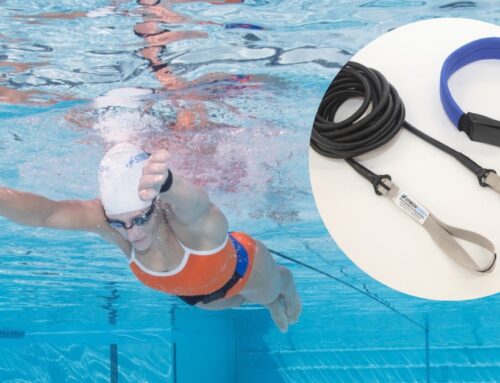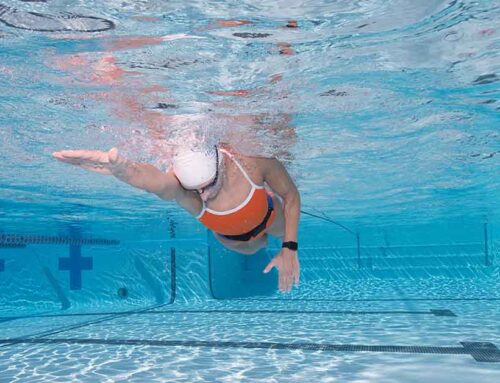Do you want to swim faster? Really, would anyone answer no? There are only two things that you can do to actually swim faster. The first is to reduce your drag. The second is to increase your forward-moving propulsive force-your swimming power. That’s it, two things. The Grudge Belt helps you with the second.
Here is the idea behind the Grudge Belt. Find someone who is about your power level and, ready, set, go, into a swimming tug-of-war. Why is this so good for swimmers? Why is it more affective than many other things a swimmer can do? Here are two reasons.
- Fast Twitch Fiber Work: Swimmers are competitive to begin with, and will work every muscle fiber to produce enough force to move that other swimmer in their direction. Because they aren’t moving (or moving at any real velocity), the resistance against their hands, arms and feet is significantly greater than in normal swimming. The force requirement for true maximal swimming taps into a swimmer’s fast twitch muscle fibers-probably near all a swimmer’s fast twitch muscle for the swimming movement. The longer they do this, the more these muscles are recruited. The more that are recruited and stressed, the more fibers will adapt to that stress. Muscles adapt by becoming stronger, able to produce more force. Believe it or not, swimmers go through entire workouts, even weeks of workouts, without using most of their fast twitch muscle fibers. But, when swimmers get to a swim meet, they always need and use those fast twitch fibers. The trick is to find a way to effectively train those fibers.
- Instant Technical Feedback: The Grudge Belt gives instant feedback. When swimmers are sprinting in practice, they don’t know until they hear a time or see the clock, how well they’re doing. With the Grudge Belt, one knows immediately. Am I moving forward, or backward, or staying still? If staying still or moving backward, something must change-some technical item within the stroke. Instant feedback will tell the swimmer if a change is good-I’m now moving forward-or not. That alone is likely to be enough positive reinforcement for the swimmer to keep that change. Do this enough and a significant change in speed should occur due to improvements in technique. In general, two Grudge Belts at a time can be in use in one lane. A Grudge Belt match should last between 15-20 seconds, with more rest than work. This means that in a short course pool, a rotation of two Grudge Belts going (2 swimmers tugging and two waiting for each) can be used in a lane-or eight swimmers per lane. This is a very effective use of space.
Here is a swim set to use with Grudge Belts. 2 x 20 second Grudge Matches on 1:00. Switch partners and strokes and repeat 5 times. The second group has their grudge match during the first’s rest period-eight swimmers per lane.




